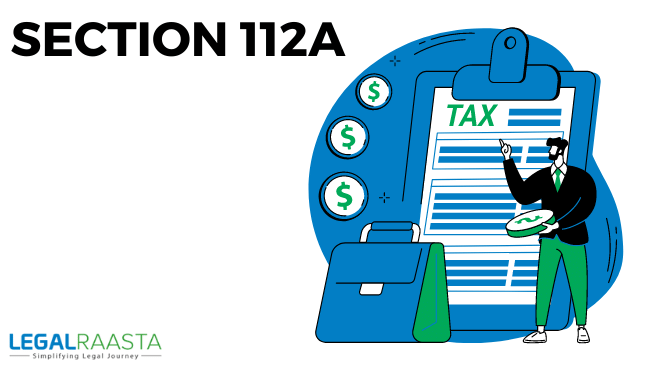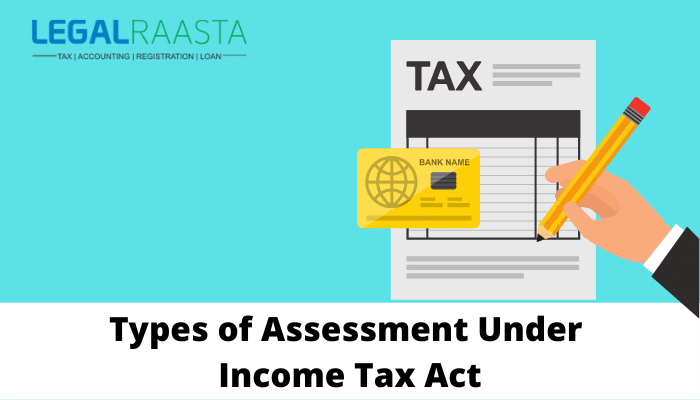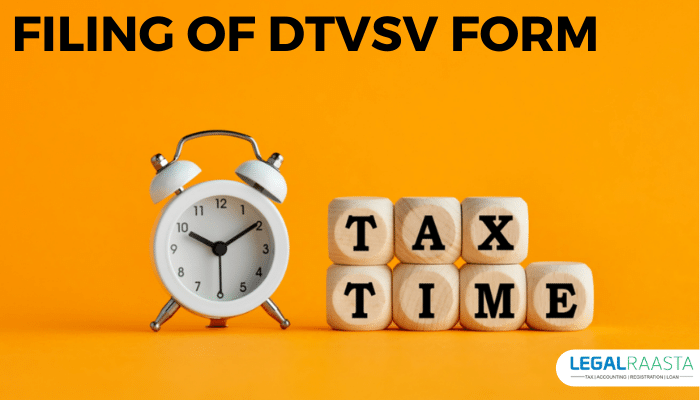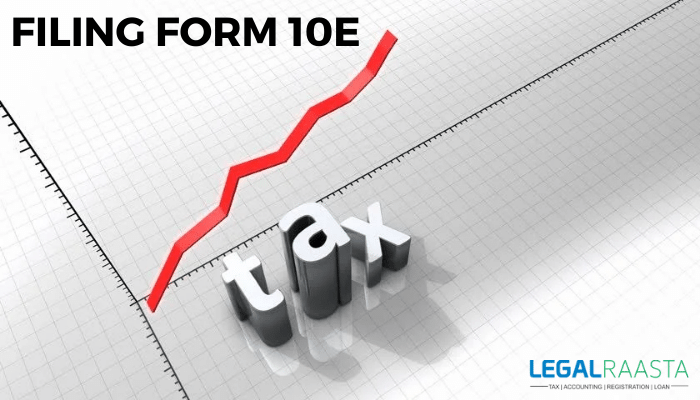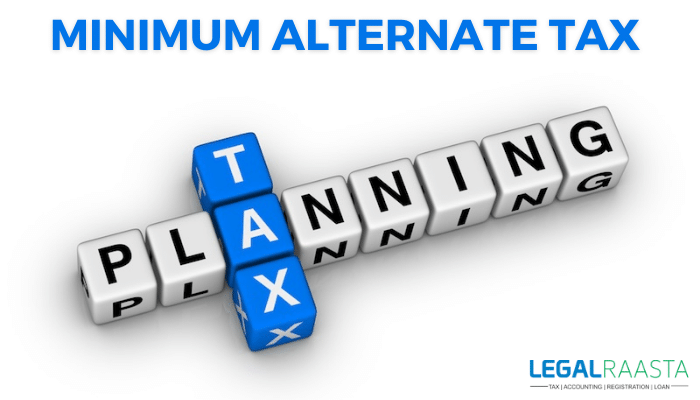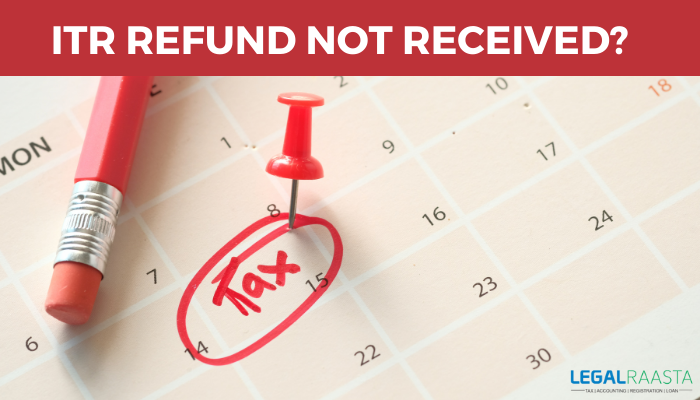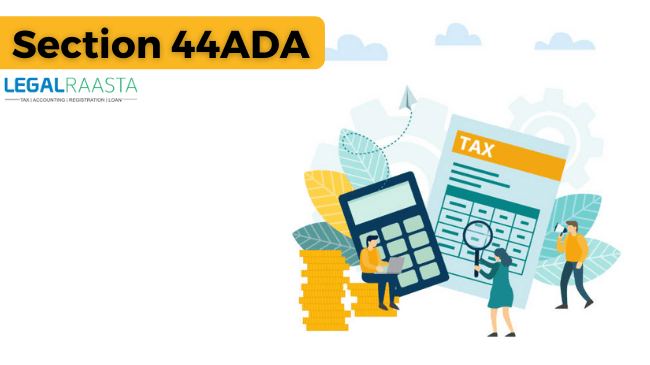Section 112A of Income Tax Act, 1961
INTRODUCTION
Through the Finance Bill 2018, the govt has presented Section 112A under the tax Act, 1961. The new section 112A has been embedded to collect long-term capital gain charges on the exchange of value share, units of value arranged assets, and units of a business trust. The justification behind the presentation of new section 112A, as given by the Government, is that the exception from a long-term capital gain charge on the move of value share, units of value situated assets, and units of business trust has prompted critical disintegration in the duty base bringing about loss of income and because of harmful utilization of tax cuts, exchange openings have been made in view of the exclusion for long-term capital gains.
BEFORE AMENDMENT OF SECTION 112A
Before Assessment Year 2018-2019, the long-term capital gain charge on the exchange of value share, units of value situated assets, and units of business trust were absolved according to arrangements of section 10 (38).
AFTER AMENDMENT OF SECTION 112A
With impact from first April 2018, arrangements of section 10 (38) won’t be appropriate to any pay emerging from the exchange of value share, units of value situated assets, and units of business trust. From first April 2018, arrangements of section 112A will be material to available pay emerging from the exchange of value shares, units of value situated assets, and units of business trust.
APPLICABILITY OF SECTION 112A
- Section 112A will be appropriate from first April 2018 (A.Y. 2019-2020)
- Transaction influencing duty of a capital gain on the move of value share, units of value situated assets, and units of business trust will be administered by the arrangements of section 112A from the successful date
- Section 112A will be appropriate just for a situation where Securities Transaction Tax (prevalently known as STT) has been paid at the hour of the movie, and furthermore on an obtaining if there should be an occurrence of value share/units of value arranged assets.
You should also read this: Section 269ST of Income Tax Act
INCOME TAX RATE UNDER SECTION 112A
At the point when arrangements of section 112A are appropriate, long-term capital gain charge @10% will be required. Further, to collect long-term capital gain charge @10%, the capital gain ought to be surpassing INR 1 Lakh.
SCOPE OF SDDCTION 112A OF THE INCOME TAX ACT 1961
The following conditions apply for availing the advantage of the concessional rate under section 112A of the Tax Act.
- In the instance of a valuable portion of an organization, the protections exchange tax(STT) has been paid on the securing and move of such resources.
- In the instance of the units of a value situated asset or the units of a business trust, the STT has been paid at the hour of offer of the resource.
- The protections ought to be long-term capital resources.
- Deduction under section VI A can’t have profited in regard to such long-term capital gain.
- Rebate under section 87A can’t be asserted in regard to the duty payable on long-term capital gain under section 112A
LONG TERM financial gain UNDER SECTION 112A OF tax ACT
Section 112A of the Income Tax Act is material to the capital gains emerging from the exchange of long-term capital resources. Coming up next are such resources:
- A value share in an organization
- Units of value situated asset
- Units of a business trust
To profit from the concessional rate under section 112A, the time of the holding of the resources ought to be more prominent than one year. The assessment payable on the all-out pay is 10% surpassing Rs. 1,00,000. Instruction cess and overcharge would be material on the available gains.
Allow us to comprehend the above with the assistance of a model. Mr. Aarush a net long-term capital gain under section 112A of Rs 2,00,000. The duty of 10% under section 112A are going to be on Rs 1,00,000 (Rs 2,00,000 – Rs 1,00,000).
On account of an individual or a Hindu unified family, being an occupant the tax collection is very unique. On the off chance that the complete pay as decreased by such long-term capital gains is beneath the essential exclusion limit, then, at that point, the long-term capital gains stand diminished by such setback sum. For instance, the all-out pay of Mr. Vijay for the year 2019-20 without the long-term capital gain under section 112A is Rs. 1,50,000, and the all-out long-term capital gain is Rs. 2,00,000.
For this situation, the all-out pay aside from the long-term capital gain is Rs. 1,50,000. Likewise, the fundamental exclusion limit is Rs. 2,50,000. Subsequently, for this situation, the long-term capital gain at 10% will be determined on the equilibrium of long-term capital gain in an abundance of Rs. 1,00,000 i.e Rs. 50,000 (2,50,000-1,50,000-1,00,000).
SET-OFF future financial loss FROM future financial gain
For a situation where the net outcome for any evaluation year is a shortfall, falling under any head of pay other than capital gain, the assessee is qualified to have the sum set off against his pay from some other source under a similar head.
On account of capital misfortunes, a momentary capital misfortune can be set off from any capital gain. Subsequently, a momentary capital misfortune can be set off against a transient capital misfortune just as long-term capital misfortune. In any case, the long-term capital misfortune can be just set-off just against long-term capital gain.
The long-term capital gain emerging from the exchange of the value shares recorded on a perceived stock trade is presently available at 10%. In case there are any long-term capital misfortunes from the offer of such value shares, such misfortunes will presently be permitted to be set off from the other long-term capital gain.
GRANDFATHERING PROVISIONS UNDER SECTION 112A OF INCOME TAX
Till the monetary year 2017-18, long-term capital gains emerging on the offer of value offers and value connected units of shared assets stood absolved under section 10(38) of the personal duty act. This had changed with the presentation of grandfathering provisos in spending plan 2018 which permitted the gains to be absolved till 31st January 2018. The expense of obtaining such protections must be determined according to the predefined recipe.
On account of protections purchased before first February 2018, the expense of obtaining in such a case was determined as underneath:
Stage 1: Consider the lower of the honest evaluation and the deal thought.
Stage 2: Consider the higher worth determined according to stage 1 and the price tag
ILLUSTRATION ON GRANDFATHERING PROVISIONS UNDER SECTION 112A OF INCOME TAX ACT
Mr. Ankit made a single amount interest in the portions of Kotak Mahindra Bank of Rs. 20 lakh in April 2009. The market worth of the said speculations as of 31st January 2018 was Rs. 50 lakh. Mr. Ankit chose to reclaim his whole interest in June 2019 for Rs.53 lakh netting a gain of Rs. 33 lakh. Notwithstanding, because of the grandfathering provision, Udit’s available gain would be just Rs. 3 lakh. This can be determined as underneath:
Stage 1: Considering the lower of the honest evaluation and the deal thought = 50 Lakh
Stage 2: Considering the higher of the price tag and the worth according to stage 1 = 50 Lakh
Consequently, the expense of obtaining for this situation would be Rs. 50 lakh bringing about a net capital gain of Rs. 3 lakh.
The long-term capital gains charge under section 112A of 10% is just on the gains above Rs 1 lakh. In our model, the assessment would be exacted on Rs. 2 lakh at 10% and the subsequent assessment of Rs. 20,000 should be paid by Mr. Ankit.
CALCULATING LONG TERM CAPITAL GAIN
- The first and second stipulations to section 48 for example advantage of indexation of cost of procurement and cost of progress will not be permitted while working out long-term capital gain charge under section 112A.
- Further, on account of NRI, the advantage of indexation and the advantage of computation of capital gain in unfamiliar cash won’t be permitted in situations where section 112A is relevant.
- Cost of procurement for the resources gained before first February 2018, will be higher of the accompanying:
- The real expense of procurement, and
- The lower of the honest evaluation of such resources and the full worth of the thought got or gathering because of the exchange of the capital resource.
- Fair market (FM) worth ought to be determined in an accompanying way –
Fair market an incentive for capital resources recorded on a perceived stock trade as of 31st January 2018 will be –
- FM esteem will be the most exorbitant cost of the capital resource cited on 31st January 2018.
- FM esteem in the event that in case there is no exchanging of the capital resource on 31st January 2018 will be the most exorbitant cost of the capital resource cited out on the town quickly going before 31st January 2018 when the resource was last exchanged.
- If the capital resources for which the honest evaluation is endeavored to be determined is a unit and yet the unit isn’t recorded on a perceived stock trade as of 31st January 2018, in such cases, the honest assessment of such capital resources will be the net resource worth of the capital resource as on 31st January 2018.
- Fair market esteem in different cases will be, in the event of a value share which isn’t recorded in the stock trade as of 31st January 2018 yet which is recorded on a stock trade on the date of moving a sum which bears to the expense of obtaining a similar extent as cost swelling list for the F.Y. 2017-18 bears to the expense expansion record for the primary year in which the resource was held or for the year starting on first April 2001, whichever is later.
- Deductions under sections 80C to 80U as well as refund under section 87A will not be permitted with the impact of capital gain required affecting arrangements of section 112A.
FAIR MARKET VALUE
- The FMV of recorded protections is the most exorbitant cost of the security cited on the perceived stock trade.
- In the event that there was no exchanging the security on 31 January 2018, the FMV is the most exorbitant cost of the security cited out on the town promptly going before 31 January 2018 when the security had exchanged on the perceived stock trade.
- On account of unlisted units starting at 31 January 2018, the net resource worth of the units starting at 31 January 2018.
- On account of value share which was recorded after 31 January 2018 or gained under consolidation or other exchange under section 47, the FMV will be: Purchase cost *Cost expansion list for FY 2017-18/Cost swelling file of the extended period of the buy or FY 2001-02.
REPORTING UNDER SCHEDULE 112A OF THE ITR
The annual assessment forms for AY 2020-21 contain Schedule 112A to empower scrip-wise announcing of long-term capital gains. Timetable 112A requires information, for example, ISIN code, name of the scrip, number of units or offers sold, deal value, buy cost, and FMV starting on 31 January 2018.
Related Blogs:
How to e-file Form 15G & upload form-15g online: Details
NRI Status and Taxation: New criteria & how income will be taxed in India

